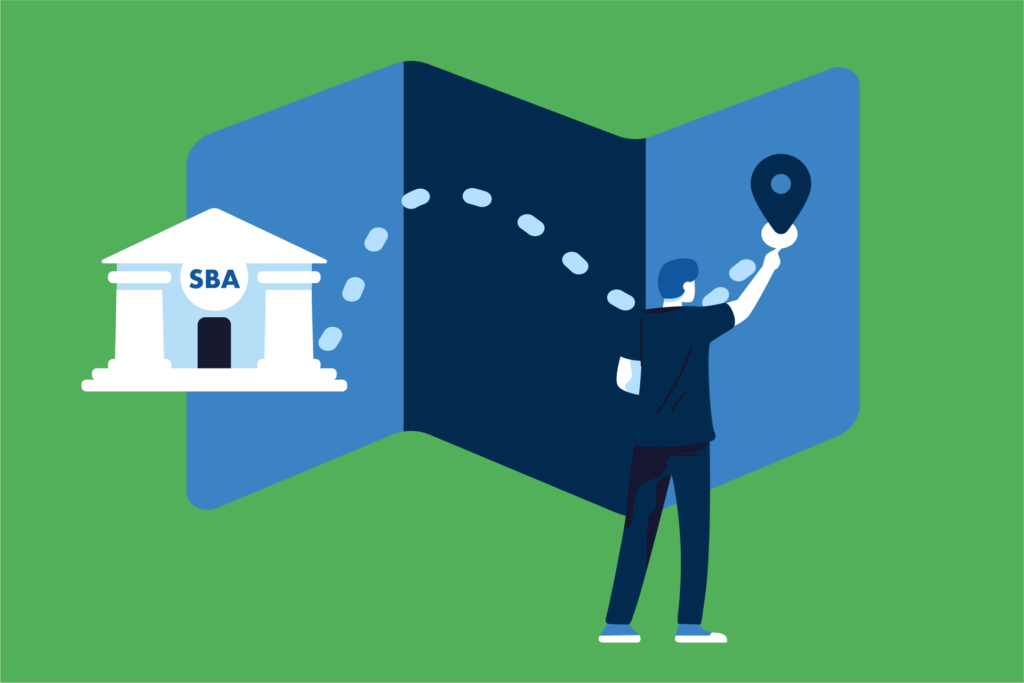Our goal at Lending Valley is to provide all small business owners access to the best loans possible for their business. You can rest assured we will get you the best rates in the market!

While small businesses are the lifeblood of the economy they also face some of the biggest challenges of any business – particularly when it comes to funding.
Managing cash flow, figuring out how to meet payroll, covering taxes, all while having money on hand to take advantage of opportunities as they become available are just some of the challenges that small businesses have to contend with on a daily basis.
Unfortunately for many small businesses, these challenges proved to be unsurmountable.
According to the United States Small Business Administration, 30% of ALL small businesses full up shop inside of three years because they run out of money. Traditional banks and lenders only approved 26.9 of all small business loans – and only 40% of all small businesses are actually profitable because of their cash flow concerns.
On the flip side of things, microloans offer unique opportunities for small businesses to gain access to the funding they need when they need it most. The US SBA also states that 70% of all small businesses could change their financial situation radically with microloans, and that the overwhelming majority of small businesses could be started with microloans of just $3000 or less.
Below we highlight this source of creative funding for entrepreneurs that are looking to take the plunge and turn their financial dreams into their financial future with a little bit more stability than they would have had before.
Microloans, by definition, are simply loans that are much smaller than your traditional business loan package and usually have much lower interest rates and shorter terms attached.
The overwhelming majority of lending institutions that offer microloans make them available for between $500 and $50,000 or so, with the SBA reporting that the average microloans sits at just about $13,000.
The Microfinance Information Exchange as reported that 74 million borrowers worldwide have taken advantage of $38 million in microloans (as of their last report in 2009, a decade ago).
Aside from the fact that they put quick cash in the hands of entrepreneurs that need funding in a hurry the other big benefit of microloans is that the only real industrywide standard for leveraging these loans is that you are running a registered business in the first place.
While in each individual lending institution will have their own rules, regulations, and governing practices that dictate and determine who is qualified for these kinds of loans (something we will cover in just a moment), as a general rule if you have a business you have a chance to apply for these kinds of lending packages.
When you get right down to it, these loans are most commonly recommended to smaller startups, “bedroom businesses”, and new businesses that have very limited capital requirements and next to no real revenue history under their belt already.

As we highlighted above, the overall qualifications necessary to apply for these kinds of loans are pretty much nonexistent as long as you are running a legitimate business to begin with.
When you get down to the more granular level of applying for these loans, however, different qualifications are going to come into play – and before we highlight below are the most common you’re going to have to contend with.
For starters, you’ll need to have a business plan that has been finalized and ready to be presented to the lending institutions that you will be leveraging microloans from.
There isn’t a lender on the planet willing to provide any financing to an entrepreneur with pie-in-the-sky dreams or a rough sketch of the business they’d like to build. Lenders want to know what the future of your business is going to look like, what the real odds of success are, and whether or not you stand a solid chance of making a go of things and paying back these loans to begin with.
Secondly, you’ll need to do your level best to clean up your credit score as much as humanly possible. While a credit score is less important to microloan lenders than institutions handing out hundreds of thousands if not millions of dollars in financing packages this is still going to play a role in the financing you are able to secure moving forward.
The better your credit score, the better your odds of success getting the financing package you are after become – and the lower your already low interest rates with microloans will inevitably be. You’ll want to stay on top of regular payments, check your report frequently for errors and have them resolved, and maintain low credit rosacea rates as much as possible.
Third, it may be a good idea to put up collateral as a guarantee against the microloans you are leveraging. Thankfully, because these kinds of lending packages usually deal with lower dollar numbers securing this with collateral from your own personal assets (and especially with your business assets) is pretty much effortless.
If your credit score isn’t perfect the odds are pretty good you will be asked to secure your loan in some way, even if you aren’t looking to take out that much to begin with.
Finally, even just a little bit of your own cash and capital being put into your business will be looked on favorably by microloans lenders.
These lending institutions are going to see that you have a little bit of skin in the game yourself, that you are as invested as they are in your success, and that you are serious about making this business venture something that succeeds.
Believe it or not, there are a whole host of different types of microloans that you could choose to take advantage of – and we highlight some of the most commonly leveraged options in this quick guide below.
While microloans have existed for as long as humans have been lending one another money and resources, this type of creative lending package wasn’t really “codified” until 1992 when the US Small Business Administration (SBA) made it a huge priority.
Looking to jumpstart the US economy, the SBA started to provide microloans financing packages to entrepreneurs all over the country but particularly in communities where financing was hard to come by.
The SBA Microloans Program was an almost overnight success, particularly when the SBA began to partner with intermediary nonprofit organizations to provide funding packages (with a $50,000 limit) that traditional lenders weren’t even interested in servicing themselves.
Before we move any further, it is important to highlight the fact that the SBA themselves aren’t actually servicing these loan. This governmental organization is not legally able to actually service loans or provide financing packages directly to US businesses or US citizens. That’s just not the way these kinds of loan packages operate.
Instead, the SBA distributes the microloans funding to actual community-based nonprofit organization directly in local areas. These community leaders are then able to disperse these lending packages to community members, businesses looking to establish themselves, and those that seek out this kind of financing themselves.
Operating as an intermediary between the SBA and the businesses looking to leverage this financing, it’s a little bit of a convoluted process but these organizations are the “boots on the ground” that make sure this money goes to the people that need it most.
This is why you have to be sure that when you look to take advantage of SBA microloans you are seeking out organizations in your local area that offer this kind of financing directly.
Of course, the SBA does provide a number of resources to not only help you locate these funding solutions but also to help you manage your loans, help you with technical assistance, and to help make sure that you are making the most of the cash and capital you leverage through these packages.
Finding a list of local intermediary lenders that you can connect with his simple and straightforward. All you have to do is visit the US SBA website yourself, search for your local community, and you’ll be provided with a whole host of organizations that you can then contact to see if they may be able to offer you the financing you are after.
Some areas will have more SBA lenders than others but it’s unlikely that you will have to travel very far to get a face-to-face meeting with these institutions that can help you with your funding.
You should know that the lending limits, credit requirements, and other qualifications for these types of lending packages will be established by these intermediary lenders. It’s not a bad idea to shop around a little bit to make sure that you are able to get the kinds of long packages your after without having to jump through all kinds of hoops at the exact same time.
Actually leveraging these kinds of financial packages is pretty simple and straightforward after you’ve located the intermediary lender and have met or exceeded the qualifications and criteria for these loans that have been put forward.
For starters, you’ll need to figure out exactly how much you’d like to take out with your new microloans.
We made mention earlier of the fact that the maximum amount you can take with a microloan that has been secured by the SBA is $50,000, but that may or may not be the amount of money that you should be taking out with this kind of lending package.
We also mentioned the fact that the average SBA microloan is for about $13,000 with a lot of entrepreneurs asking for as little as $500 just to hit the ground running.
You’ll want to figure out exactly how much money you need with this loan, something that will be dictated by how you plan on using the money, the interest rates and payments you’ll have to make, and other cash flow considerations.
The negotiation of this detail will have to be handled with the intermediary that you are working with.
Secondly, you’ll need to figure out the term length of the loan that you are hoping to secure as well.
As far as the Small Business Administration is concerned microloans are able to be offered for any term length of time as long as they do not exceed a term of six years. Once you go beyond that six-year block of time the microloans transitions into a traditional loan, and then there are a whole host of other factors, key criteria, and qualifications that need to be met before you’re able to move forward.
The overwhelming majority of these kinds of lending packages are for significantly shorter terms than six years. Most microloans have terms that only stretch out about a year or two, with a fair share of these loan being taken out for much shorter blocks of time than that – sometimes for as little as six months or so.
Again, these are factors entrepreneurs will have to negotiate with the intermediary lender.
Finally, they’ll have to make sure that you understand exactly what you are repaying as far as interest rates are concerned.
On average, SBA secured microloans are going to have interest rates that sit anywhere between 8% and 13%. It should come as no surprise to anyone, however, that intermediary lenders (influenced significantly by interest rates set through the US Treasury) are going to have the final say over the interest rates of your specific lending package.

Moving through the actual application process so that you can leverage these kinds of funding packages is simple and straightforward.
Right out of the gate, you’ll need to find an approved intermediary financing organization that you can take advantage of SBA backed microloans with.
The SBA has a list of these organizations on their website but many of your local banks and other financial servicing organizations will prominently advertise the fact that they are SBA lenders. It’s not a bad idea to shop around just to get a feel for the lay of the land, the different qualifications you may have to meet, and to work with an organization that you feel comfortable with.
After picking your lender that you want to work with you’ll have to reach out to them directly to figure out the qualifications they have in place, the lending criteria you’ll have to meet, and whether or not there are any specific business development requirements that you have to accomplish before you get approved.
The overwhelming majority of these business development requirements are going to revolve around business and financial management, helping to improve your odds of success as a business owner and entrepreneur.
We’ve talked about this at length throughout this quick guide but the lenders that provide you with this financing want you to succeed and are going to do everything they can to make sure that you make the most of these financial packages.
The fact that the micro lending approvals process can be so subjective (and that qualifications vary so much from one lender to another) really highlights the fact that participation in these kinds of programs can skyrocket your odds of obtaining the funding you are after.
The last step in the process is to actually submit the application that you have worked on to get the funding you hope to take advantage of.
This process is pretty simple, pretty straightforward, and pretty streamlined – especially if you’ve already gone through the steps that we highlighted just a moment ago. Individual application processes can be unique and distinct from one another depending on the lender you are working with, but as a general rule the process shouldn’t take all that much time to get started and submitted.
After your application has been submitted, however, the wait can be a little bit longer than most entrepreneurs anticipate. Not only does your application have to be combed over by the intermediary lending organization and approved but it also has to be submitted to the SBA for their final approval and green light.
This can be fast tracked in rare circumstances, but most people should anticipate an overall wait time of around four weeks before they get final approval for the financing packages they are hoping for. Sometimes it can take even longer than that, which is why it’s always a good idea to talk to the intermediary lender you’re working with to get a feel for the actual timeline and their average turnaround schedule.
At the end of the day, while the US Small Business Administration operates as the primary source of micro lending opportunities they aren’t by any stretch of the imagination the only financers willing to provide these kinds of packages.
If you’d like to shop around a little more to see if you can get a better deal, more money, or faster access to the financing you are after it’s not a bad idea to look into organizations like…
…to see if they can help you with all of your micro loan needs.
It might also be a good idea to look into business credit card lending opportunities and other short-term loan packages from traditional lenders (or nontraditional lenders), depending on the specifics of your cash flow situation, the opportunities you’re looking to leverage, the timeline you are looking for funding, and a whole host of other individual business factors.